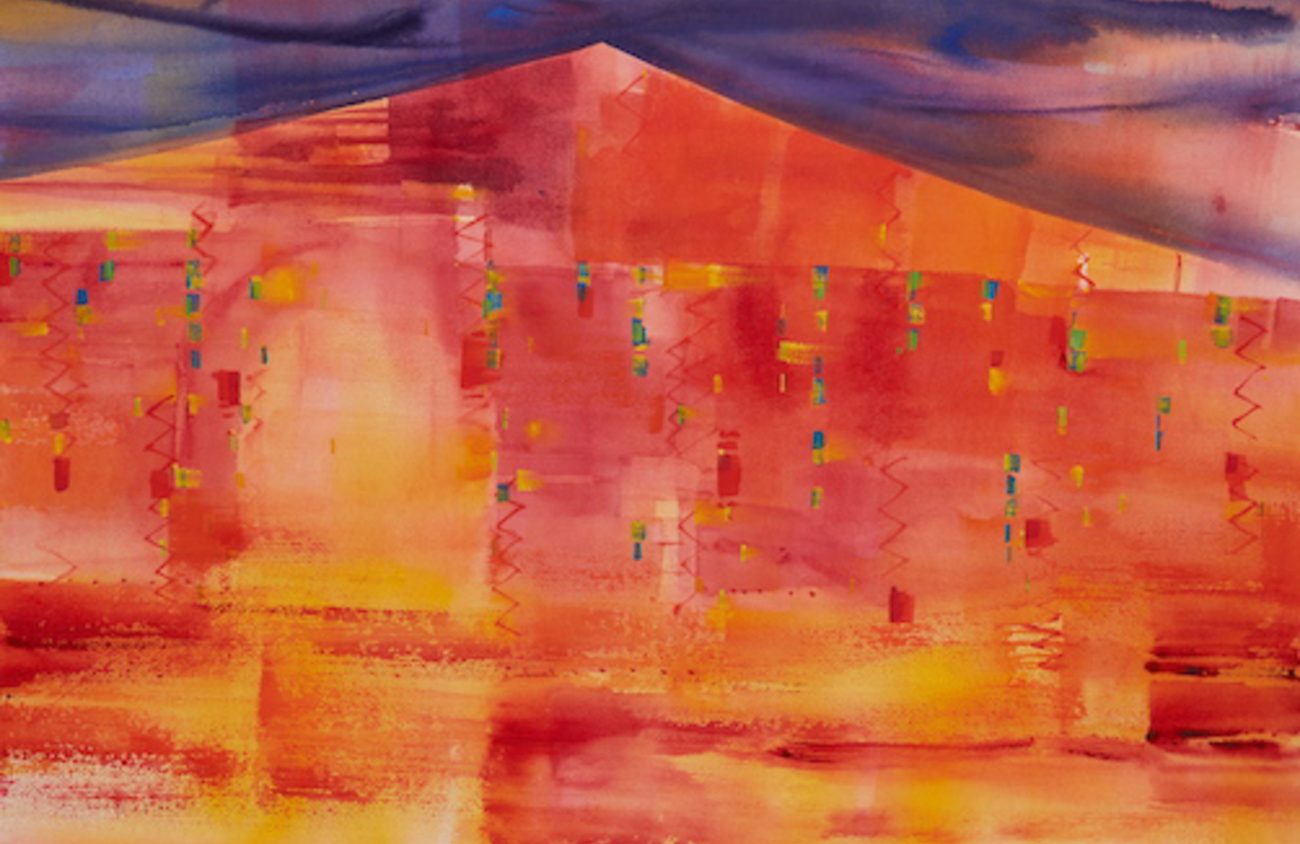The most entertaining dictum I’ve heard about the question of art’s function — and the easiest to prove — is that the purpose of art is to inspire other art.
I was reminded of this philosophy attending Satoko Motouji’s art opening earlier this month at White Lotus Gallery, where the artist and Toni Pimble, Eugene Ballet’s artistic director, discussed the inspiration and collaboration that produced the exhibit “Peer Gynt: Paintings by Satoko Motouji,” which is on view through May 12.
If not for Norwegian playwright Henrik Ibsen — often called the father of modern theater — the play Peer Gynt would not have been written and would not have inspired Norwegian composer Edvard Grieg.
If not for an Edinburgh Fringe Festival production of Peer Gynt, which incorporated Grieg’s music, Pimble might not have been inspired to create a production of the same play at the Hult Center. And she would not have contacted Satoko, who was at that time painting in the woods as part of an artist residency at the Sitka Center for Art and Ecology.
At the opening, Satoko and Pimble spoke to a crowded room about their collaboration and how it could not have been executed as effectively if not for Portland videographer Jesse Zepeda and his mastery using a powerful digital projector rented from Los Angeles and paid for with funds from a Hult Endowment.
The Eugene Ballet’s production of Peer Gynt was a multidisciplinary effort that included Ibsen’s story about a wandering son and his various relationships with women, with live music led by music director Brian McWhorter, costumes designed by Pimble, and of course performances by members of Eugene Ballet. A ballet like this, I learned, takes about two years to produce. It was shown only two days, on April 14 and 15.
Satoko had never collaborated on such a project before and says she felt nervous about creating the scenic paintings for the production. Her strategy was to work through them quickly, and she did so while listening to music from the ballet. The result was an immersion into the material. Her minimalistic approach, lack of detail in the paintings, was done to connect with what Pimble felt was the universality of Peer Gynt — a character representing the prodigal son.
The paintings in the gallery are mostly colorful, stylized, landscape watercolors, except for a handful of figurative works depicting characters from the play (which Satoko created specifically for the show at White Lotus). The artist worked on standard watercolor sheets roughly 22 by 30 inches, so she was amazed the first time she saw her watercolors projected onto the Silva Concert Hall stage, at about 60 by 40 feet.
The paintings stand on their own in the gallery, but they were transformed during the ballet. They set scenes on stage, framing the action, and were manipulated to fade in and out. Satoko’s fluid watercolor skies and colorful mountains flowed across the stage, altering in tone to echo the emotion of choreography and plot.
Among the most successful transformations was a desert scene for which the artist created a series of tent paintings. The Tent in the Desert No. 1 and No. 2, projected on the stage, created a convincing physical space that felt both real and fantastic. Satoko said at first she painted a more realistic version of a tent, but then, keeping in line with Pimble’s vision for an impressionistic environment, she abandoned realism for a brilliant orange shape. Design elements within the tent were inspired by Bedouin tapestry and can be interpreted either as windows or stars — as inside the tent or outside in the world.
After the ballet, dancers spoke with members of the audience in the Hult lobby. I asked one, Colton West, whether he liked the artwork used for the scenes. He told me that he did, though it wasn’t to do with any painting in particular. He just liked that the artist made them specially for this ballet.
“Peer Gynt: Paintings by Satoko Motouji” runs at White Lotus Gallery, 767 Willamette Street, through May 12.
